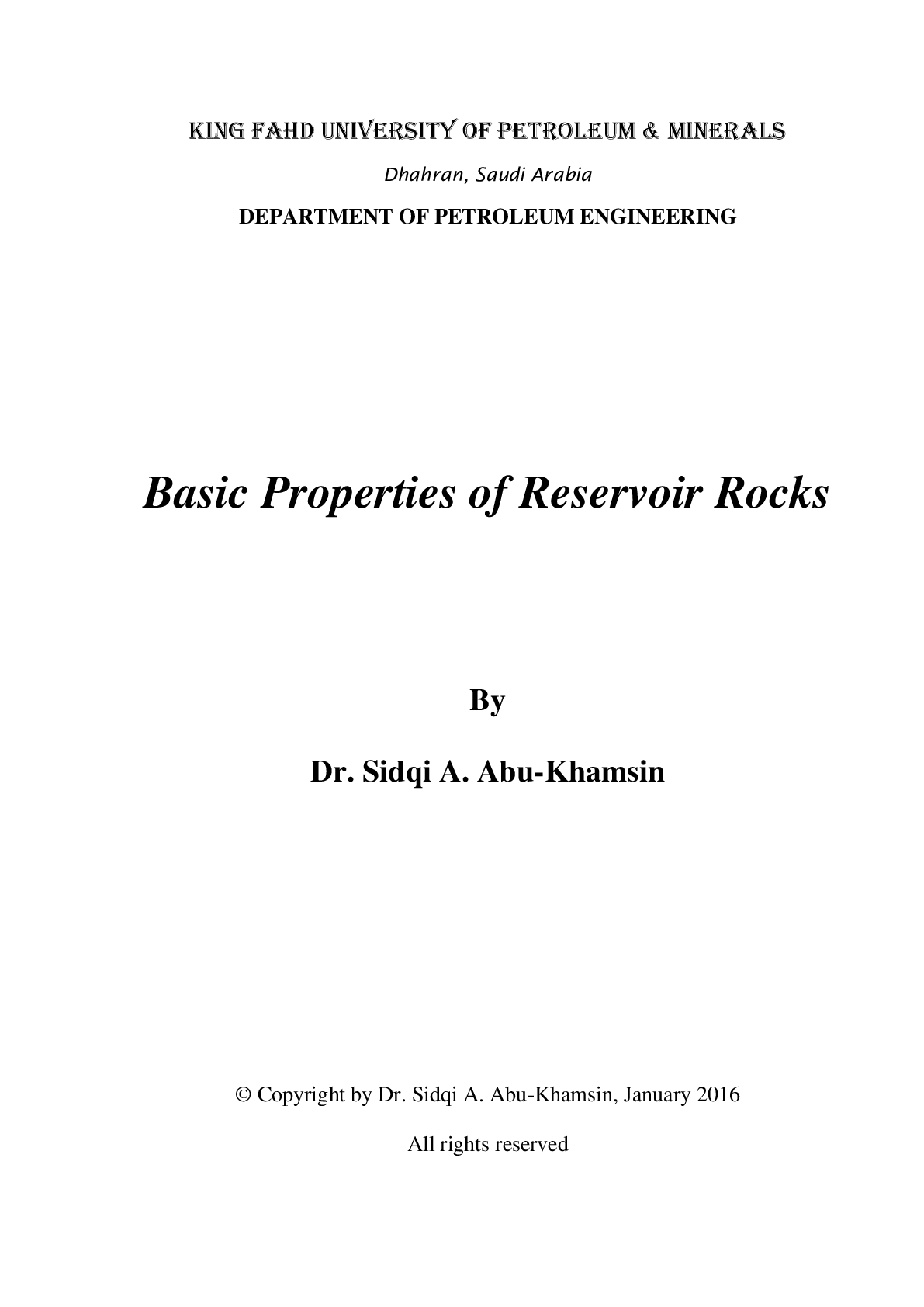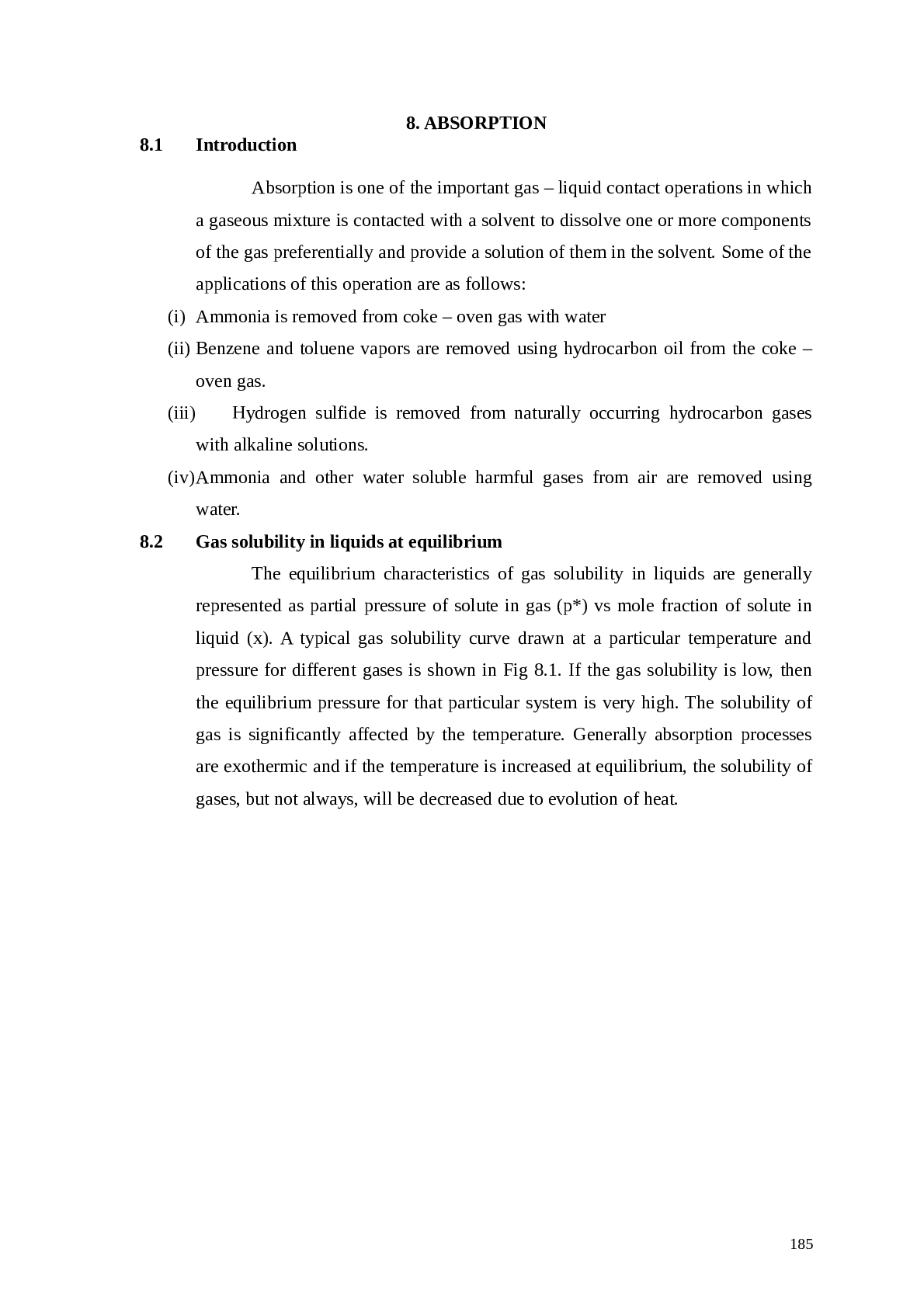Engineering > COURSE NOTES > KING FAHD UNIVERSITY OF PETROLEUM & MINERALS Dhahran, Saudi Arabia DEPARTMENT OF PETROLEUM ENGINEERI (All)
KING FAHD UNIVERSITY OF PETROLEUM & MINERALS Dhahran, Saudi Arabia DEPARTMENT OF PETROLEUM ENGINEERING Basic Properties of Reservoir Rocks | Download for quality grades |
Document Content and Description Below
1. INTRODUCTION 1.1: The nature of petroleum All chemical compounds found in nature are classified as either organic or inorganic. Organic compounds are those that contain carbon; and one conditio... n in this classification is that the carbon atoms must be covalently bonded to some of the other atoms in the molecule. An important group within the organic family of compounds is the hydrocarbons, which are compounds composed of carbon and hydrogen only. Hydrocarbon molecules range in size and complexity from simple methane (CH4) with one carbon atom to asphaltenes, which contain hundreds of carbon atoms that are arranged in very complex molecular structures. The main sources of hydrocarbons in nature are coal and petroleum with recoverable reserves of about 1 trillion tons and 200 billion tons, respectively. Petroleum is a mixture of hundreds of thousands of different hydrocarbons and is found in many forms: in the gaseous state as natural gas, in the liquid state as crude oil, or in the solid state as tar and bitumen. Because it is easier to process, ship and consume, petroleum is more attractive than coal and, thus, has become a prime source of energy in the modern world. 1.2: The petroleum reservoir Petroleum is mostly found trapped within sedimentary rocks at various depths below the surface of the earth where it has accumulated over millions of years. A petroleum trap is a geological structure or feature where petroleum accumulates within a sedimentary rock layer (formation) and cannot move out of it. The obstacle to the movement of petroleum is caused by the geometry of the layer or its properties, the properties of adjacent layers, or all these factors combined. Sometimes, the flow of underground water can cause entrapment of petroleum. A typical trap is the anticline, formed when several sedimentary layers become folded as shown in Fig. 1.1. Here in this example, petroleum is generated deep under the surface and then flows into the limestone layer. Since water fills – saturates – all subsurface layers, and because petroleum is generally lighter than water, petroleum – in the form of hydrocarbon molecules aggregated into oil droplets or gas bubbles - migrates upwards along the limestone layer until it reaches the crest of this layer. However, the anhydrite layer above the limestone is too impervious to allow petroleum to continue its movement upwards, which causes the petroleum to remain trapped in the limestone. As more hydrocarbon molecules are [Show More]
Last updated: 2 years ago
Preview 1 out of 118 pages

Buy this document to get the full access instantly
Instant Download Access after purchase
Buy NowInstant download
We Accept:

Reviews( 0 )
$15.00
Can't find what you want? Try our AI powered Search
Document information
Connected school, study & course
About the document
Uploaded On
Apr 04, 2023
Number of pages
118
Written in
Additional information
This document has been written for:
Uploaded
Apr 04, 2023
Downloads
0
Views
136



